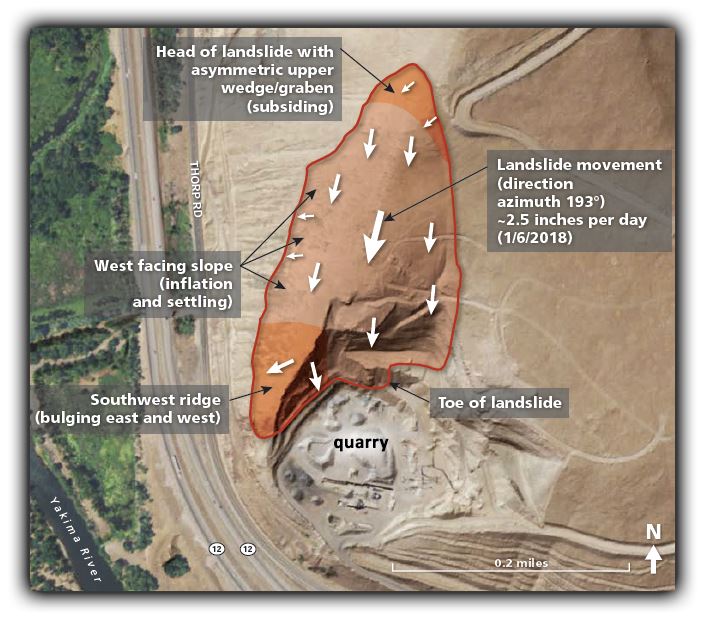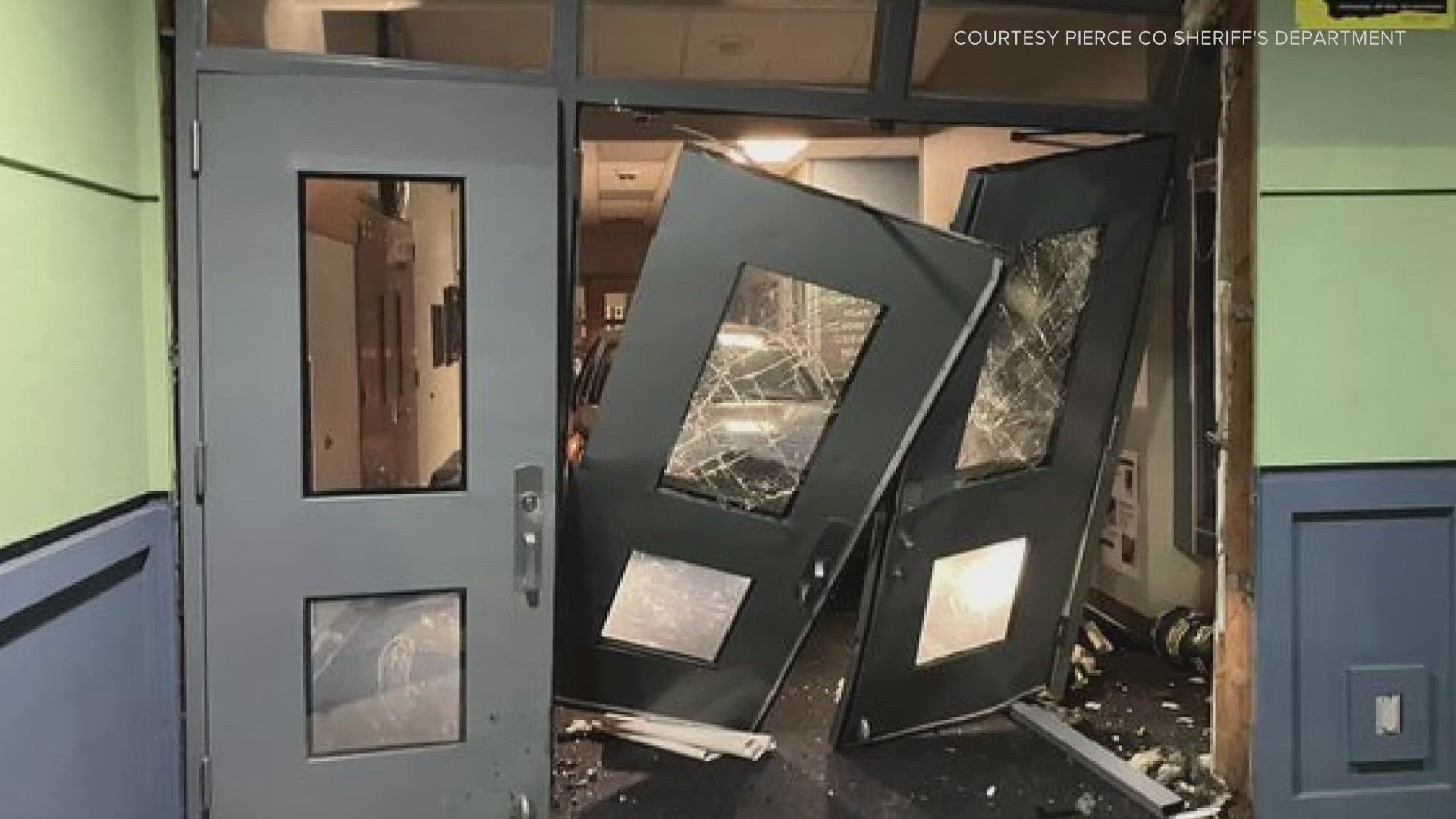A slow-moving landslide in Yakima County has caught the attention of residents across Washington. Governor Jay Inslee visited the site over the weekend for reassurance the state wasn't dealing with another slide like the one in Oso in 2014 that killed 43 people.
In a Facebook Live interview with the Yakima Herald-Republic Monday afternoon, Stephen Slaughter with the Department of Natural Resources explained the difference. The key takeaway, Rattlesnake Ridge doesn't include water.
"This landslide doesn't seem to have any water in it. Which is important because in Washington state most of our landslides involve water of some sort to help drive those landslides and help them move rapidly," said Slaughter, a landslide geologist.
What's the biggest difference between the two? Rattlesnake Ridge is primarily made of rock.
The landmass that is coming down from Rattlesnake Ridge is solid, moving as "a fairly coherent mass."
Slaughter explains that the Oso landslide was comprised of glacial sediment: sand, silt, clay, and gravel. The wet nature of the materials made it move so quickly over the valley.


